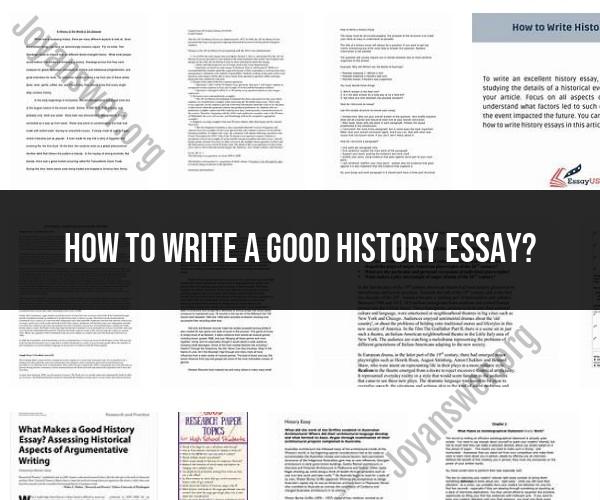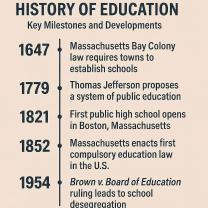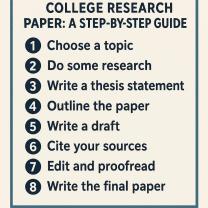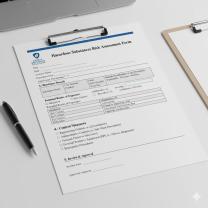How to write a good history essay?
Writing a strong history essay requires careful planning, research, and effective writing techniques. Here are some tips and techniques to help you craft a good history essay:
Understand the Assignment:
- Carefully read the essay prompt or assignment instructions to ensure you understand the specific requirements, such as the topic, length, and formatting.
Select a Strong Topic:
- Choose a well-defined and interesting topic for your essay. It should be specific enough to allow for in-depth analysis but not so narrow that you can't find sufficient research material.
Research Thoroughly:
- Conduct comprehensive research using reputable sources such as books, academic articles, primary sources, and online databases. Take notes and organize your research material.
Develop a Clear Thesis Statement:
- Craft a clear and concise thesis statement that presents the main argument or point of your essay. Your thesis should be debatable and supported by evidence.
Create an Outline:
- Organize your essay by creating an outline. This will help you structure your essay and ensure that your ideas flow logically.
- Write a compelling introduction that provides context for your topic, introduces your thesis statement, and outlines the main points you will discuss in the essay.
Body Paragraphs:
- Each body paragraph should focus on a specific point or argument related to your thesis statement.
- Begin each paragraph with a clear topic sentence that states the main point of the paragraph.
- Support your arguments with evidence from your research, such as quotes, statistics, and examples.
- Provide analysis and interpretation of the evidence to explain how it supports your thesis.
- Use transitional phrases to ensure smooth transitions between paragraphs.
Use Primary and Secondary Sources:
- Incorporate both primary and secondary sources into your essay. Primary sources provide firsthand information, while secondary sources offer analysis and interpretation.
Avoid Plagiarism:
- Properly cite all sources using a recognized citation style (e.g., APA, MLA, Chicago). Plagiarism is a serious academic offense, so be sure to give credit to the original authors.
Conclusion:
- Summarize your main arguments and restate your thesis statement in the conclusion.
- Reflect on the significance of your topic and its broader historical context.
- Avoid introducing new information in the conclusion.
Revise and Proofread:
- Review and revise your essay for clarity, coherence, and grammar. Check for spelling and punctuation errors.
- Ask a peer, tutor, or professor to review your essay for feedback.
Edit for Style:
- Ensure that your writing is clear, concise, and free from jargon or unnecessary complexity.
- Vary your sentence structure and word choice to keep the reader engaged.
Check Formatting:
- Follow the formatting guidelines specified in the assignment, including font size, margins, and citation style.
Final Review:
- Before submitting, take one final look at your essay to ensure that it meets all the requirements and is well-organized.
Seek Feedback:
- If possible, seek feedback from your instructor or a knowledgeable peer. Constructive feedback can help you improve your essay further.
Remember that a good history essay is not just a presentation of facts but an analysis and interpretation of historical events and their significance. It should engage the reader and offer a fresh perspective on the topic. Practice and continuous improvement will help you develop your historical writing skills over time.













